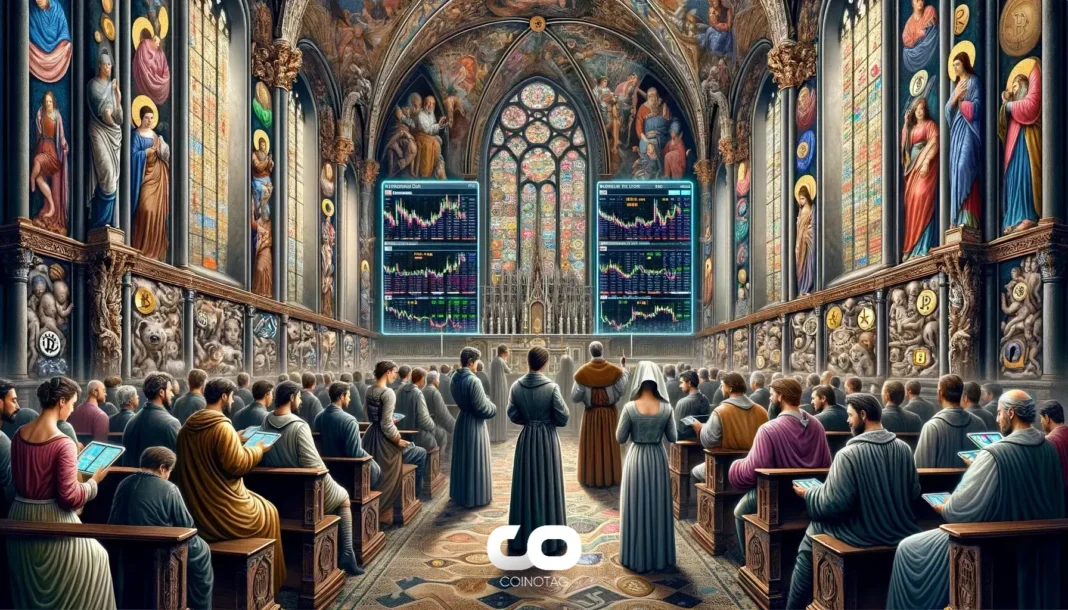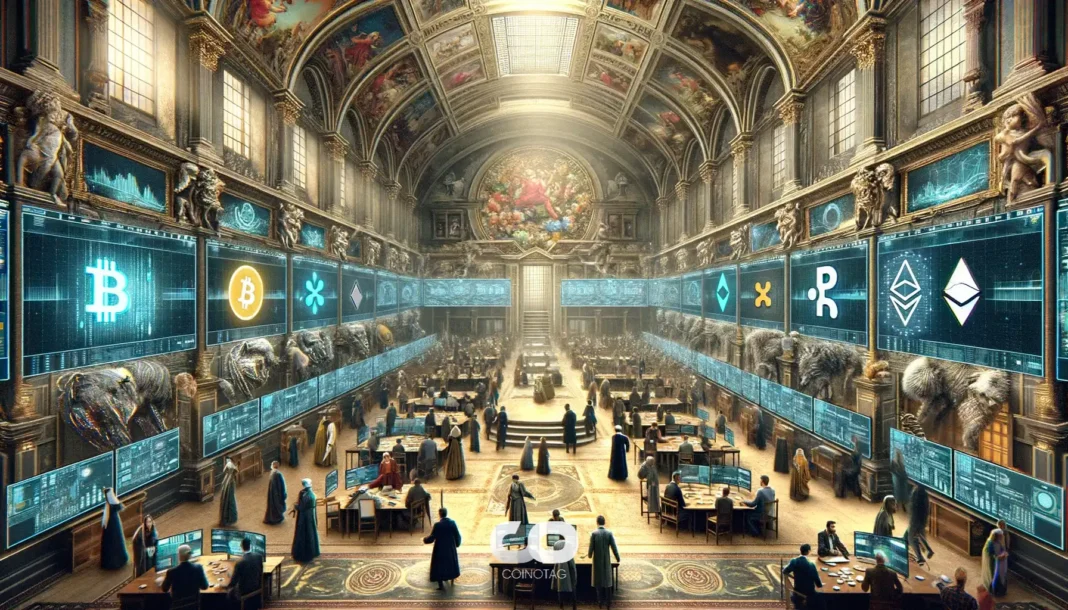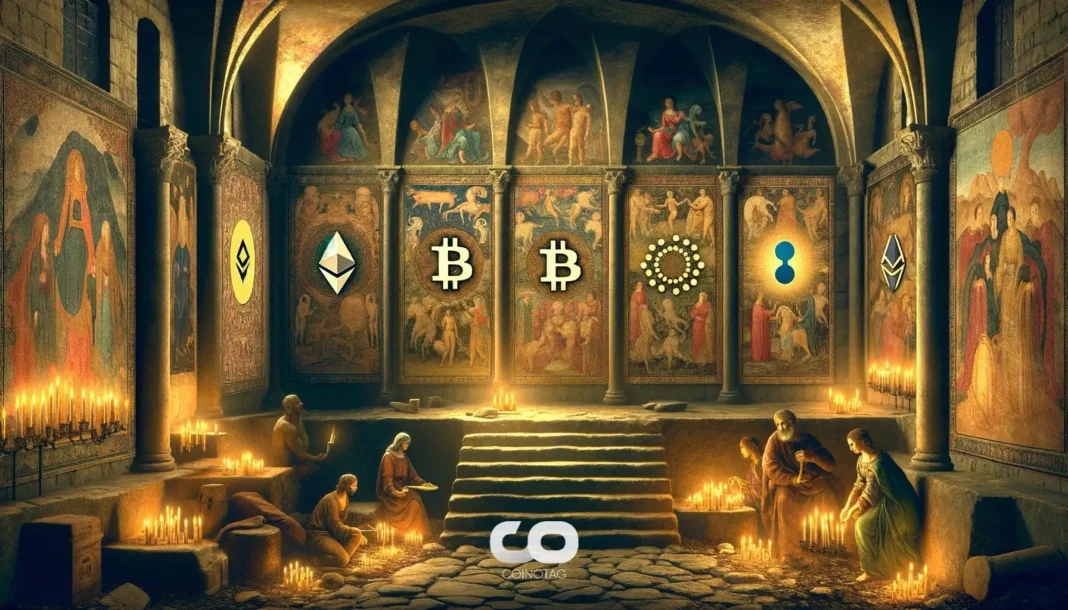| COINOTAG recommends • Exchange signup |
| 💹 Trade with pro tools |
| Fast execution, robust charts, clean risk controls. |
| 👉 Open account → |
| COINOTAG recommends • Exchange signup |
| 🚀 Smooth orders, clear control |
| Advanced order types and market depth in one view. |
| 👉 Create account → |
| COINOTAG recommends • Exchange signup |
| 📈 Clarity in volatile markets |
| Plan entries & exits, manage positions with discipline. |
| 👉 Sign up → |
| COINOTAG recommends • Exchange signup |
| ⚡ Speed, depth, reliability |
| Execute confidently when timing matters. |
| 👉 Open account → |
| COINOTAG recommends • Exchange signup |
| 🧭 A focused workflow for traders |
| Alerts, watchlists, and a repeatable process. |
| 👉 Get started → |
| COINOTAG recommends • Exchange signup |
| ✅ Data‑driven decisions |
| Focus on process—not noise. |
| 👉 Sign up → |
-
Max Resnick’s transition to Solana marks a significant shift in the cryptocurrency landscape, stirring discussions among blockchain enthusiasts and experts alike.
-
His move underscores the increasing competition between major blockchain networks, particularly between Ethereum and Solana, as developers seek to capitalize on evolving technologies.
-
Resnick stated, “In my first 100 days, I plan on writing a spec for as much of the Solana protocol as I can get to,” highlighting his commitment to advancing Solana’s development.
Max Resnick joins Solana’s Anza as Ethereum faces competitive pressures; his insights could reshape the future of blockchain development.
Max Resnick’s New Role at Anza and Its Implications for Solana
Max Resnick, previously the head of research at Consensys, is taking on a pivotal role at Anza, a firm dedicated to Solana’s research and development. The announcement of his new position has ignited discussions about Solana’s growing prominence in the crypto space. Resnick noted that the Anza developers are “extremely cracked,” indicating his high expectations for the team’s capabilities. This transition not only marks a personal career shift but also signifies the larger implications of developer migration on network competition.
The Competitive Dynamics Between Ethereum and Solana
The rivalry between Ethereum and Solana is intensifying as developers, like Resnick, migrate towards platforms that promise greater efficiency and lower costs. With Solana’s impressive transaction speeds and reduced fees, more projects are choosing to leverage its framework. This shift represents a critical moment for Ethereum, which has seen its own developers and users express frustration over technical limitations. “Ethereum needs to revert to its original core values,” Resnick emphasized, suggesting that the network must adapt quickly to maintain its standing.
Key Developments in Solana’s Ecosystem
Solana has recently surpassed Ethereum in terms of chain fees and protocol fees, reflecting a significant trend among users seeking cost-effective solutions in decentralized finance (DeFi). The shift signifies a broader acceptance of Solana’s potential, particularly as its decentralized exchange (DEX) volumes exceed those of Ethereum during November. Blockchain data provider COINOTAG has highlighted these changes, illustrating a pivotal moment in the market where user preference is rapidly evolving.
| COINOTAG recommends • Professional traders group |
| 💎 Join a professional trading community |
| Work with senior traders, research‑backed setups, and risk‑first frameworks. |
| 👉 Join the group → |
| COINOTAG recommends • Professional traders group |
| 📊 Transparent performance, real process |
| Spot strategies with documented months of triple‑digit runs during strong trends; futures plans use defined R:R and sizing. |
| 👉 Get access → |
| COINOTAG recommends • Professional traders group |
| 🧭 Research → Plan → Execute |
| Daily levels, watchlists, and post‑trade reviews to build consistency. |
| 👉 Join now → |
| COINOTAG recommends • Professional traders group |
| 🛡️ Risk comes first |
| Sizing methods, invalidation rules, and R‑multiples baked into every plan. |
| 👉 Start today → |
| COINOTAG recommends • Professional traders group |
| 🧠 Learn the “why” behind each trade |
| Live breakdowns, playbooks, and framework‑first education. |
| 👉 Join the group → |
| COINOTAG recommends • Professional traders group |
| 🚀 Insider • APEX • INNER CIRCLE |
| Choose the depth you need—tools, coaching, and member rooms. |
| 👉 Explore tiers → |
The Future of Blockchain Development: What Lies Ahead?
The influx of talent like Resnick into Solana’s ecosystem raises critical questions about the future trajectory of blockchain development. Developers are becoming increasingly selective about where to invest their time, prompting platforms to innovate continuously. Resnick’s declaration to focus on enhancing fee markets and consensus implementations suggests that further advancements in Solana will occur swiftly, positioning it as a more appealing alternative to Ethereum moving forward.
Conclusion
As Max Resnick embarks on this new chapter with Anza, his insights and contributions could play a pivotal role in shaping Solana’s network capabilities. With developers increasingly questioning the direction of Ethereum, the competition in blockchain space is set to heat up. The coming months will be crucial as both networks strive to adapt and innovate, potentially redefining their roles within the cryptocurrency ecosystem.
| COINOTAG recommends • Exchange signup |
| 📈 Clear interface, precise orders |
| Sharp entries & exits with actionable alerts. |
| 👉 Create free account → |
| COINOTAG recommends • Exchange signup |
| 🧠 Smarter tools. Better decisions. |
| Depth analytics and risk features in one view. |
| 👉 Sign up → |
| COINOTAG recommends • Exchange signup |
| 🎯 Take control of entries & exits |
| Set alerts, define stops, execute consistently. |
| 👉 Open account → |
| COINOTAG recommends • Exchange signup |
| 🛠️ From idea to execution |
| Turn setups into plans with practical order types. |
| 👉 Join now → |
| COINOTAG recommends • Exchange signup |
| 📋 Trade your plan |
| Watchlists and routing that support focus. |
| 👉 Get started → |
| COINOTAG recommends • Exchange signup |
| 📊 Precision without the noise |
| Data‑first workflows for active traders. |
| 👉 Sign up → |
| COINOTAG recommends • Members‑only research |
| 📌 Curated setups, clearly explained |
| Entry, invalidation, targets, and R:R defined before execution. |
| 👉 Get access → |
| COINOTAG recommends • Members‑only research |
| 🧠 Data‑led decision making |
| Technical + flow + context synthesized into actionable plans. |
| 👉 Join now → |
| COINOTAG recommends • Members‑only research |
| 🧱 Consistency over hype |
| Repeatable rules, realistic expectations, and a calmer mindset. |
| 👉 Get access → |
| COINOTAG recommends • Members‑only research |
| 🕒 Patience is an edge |
| Wait for confirmation and manage risk with checklists. |
| 👉 Join now → |
| COINOTAG recommends • Members‑only research |
| 💼 Professional mentorship |
| Guidance from seasoned traders and structured feedback loops. |
| 👉 Get access → |
| COINOTAG recommends • Members‑only research |
| 🧮 Track • Review • Improve |
| Documented PnL tracking and post‑mortems to accelerate learning. |
| 👉 Join now → |







